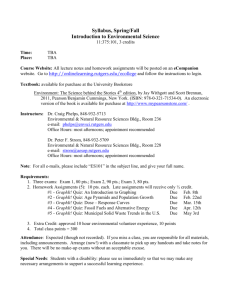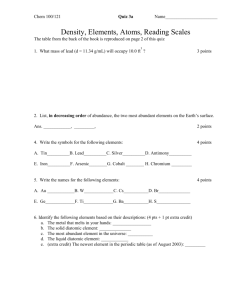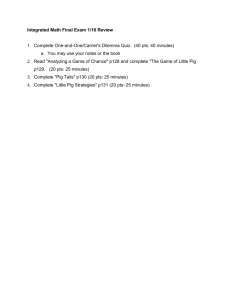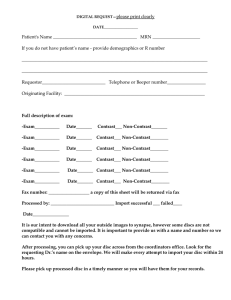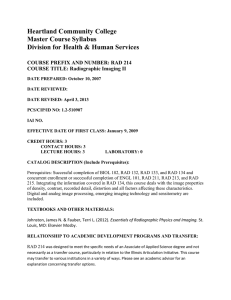375 101 Intro to Env.. - Department of Environmental Sciences
advertisement
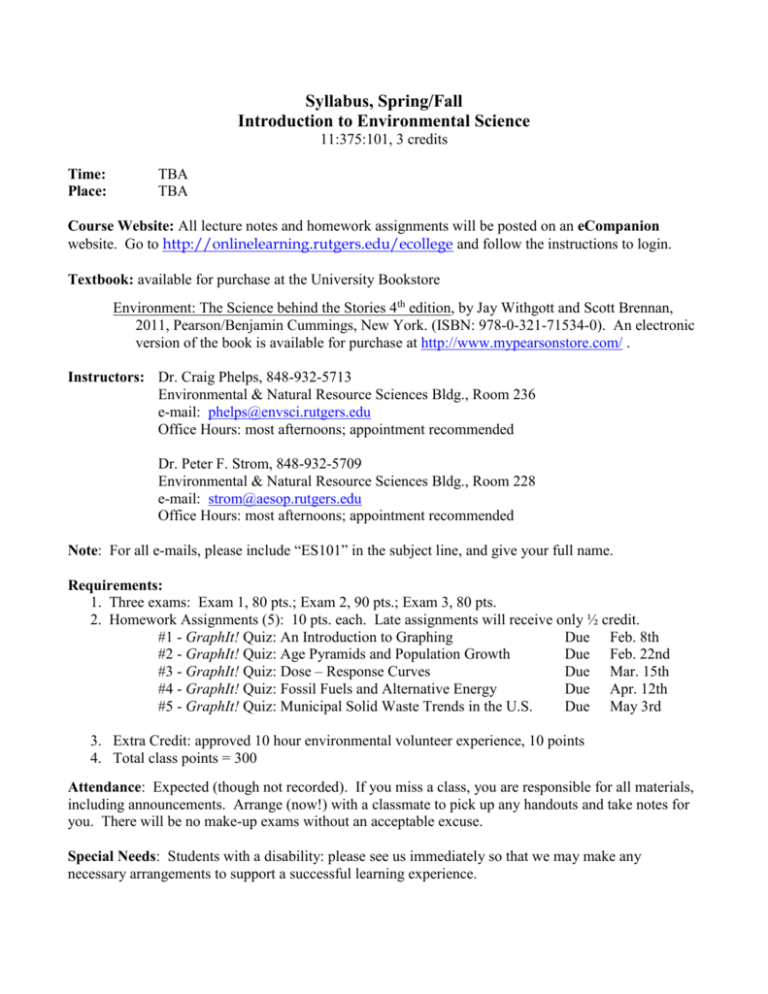
Syllabus, Spring/Fall Introduction to Environmental Science 11:375:101, 3 credits Time: Place: TBA TBA Course Website: All lecture notes and homework assignments will be posted on an eCompanion website. Go to http://onlinelearning.rutgers.edu/ecollege and follow the instructions to login. Textbook: available for purchase at the University Bookstore Environment: The Science behind the Stories 4th edition, by Jay Withgott and Scott Brennan, 2011, Pearson/Benjamin Cummings, New York. (ISBN: 978-0-321-71534-0). An electronic version of the book is available for purchase at http://www.mypearsonstore.com/ . Instructors: Dr. Craig Phelps, 848-932-5713 Environmental & Natural Resource Sciences Bldg., Room 236 e-mail: phelps@envsci.rutgers.edu Office Hours: most afternoons; appointment recommended Dr. Peter F. Strom, 848-932-5709 Environmental & Natural Resource Sciences Bldg., Room 228 e-mail: strom@aesop.rutgers.edu Office Hours: most afternoons; appointment recommended Note: For all e-mails, please include “ES101” in the subject line, and give your full name. Requirements: 1. Three exams: Exam 1, 80 pts.; Exam 2, 90 pts.; Exam 3, 80 pts. 2. Homework Assignments (5): 10 pts. each. Late assignments will receive only ½ credit. #1 - GraphIt! Quiz: An Introduction to Graphing Due Feb. 8th #2 - GraphIt! Quiz: Age Pyramids and Population Growth Due Feb. 22nd #3 - GraphIt! Quiz: Dose – Response Curves Due Mar. 15th #4 - GraphIt! Quiz: Fossil Fuels and Alternative Energy Due Apr. 12th #5 - GraphIt! Quiz: Municipal Solid Waste Trends in the U.S. Due May 3rd 3. Extra Credit: approved 10 hour environmental volunteer experience, 10 points 4. Total class points = 300 Attendance: Expected (though not recorded). If you miss a class, you are responsible for all materials, including announcements. Arrange (now!) with a classmate to pick up any handouts and take notes for you. There will be no make-up exams without an acceptable excuse. Special Needs: Students with a disability: please see us immediately so that we may make any necessary arrangements to support a successful learning experience. Objectives of the Course 1. Introduce a variety of environmental problems, and solutions in a scientific context. 2. Teach students how to understand environmental issues using a scientific approach. 3. Improve basic scientific literacy. SAS Core Curriculum Learning Goals I: 21st Century Challenges c. Analyze the relationship that science and technology have to contemporary social issues. II: Areas of Inquiry A: Natural Sciences e. Understand and apply basic principles and concepts in the physical and biological sciences. f. Explain and be able to assess the relationship among assumptions, method, evidence, arguments, and theory in scientific analysis. Tentative Class Schedule (subject to change; check website) Date Day Topic No. Instructor Introduction 1 CP + PS Science and Sustainability 2 CP Earth’s Physical Systems 3 CP Systems and Ecosystems I 4 CP Systems and Ecosystems II 5 CP Ethics 6 PS Economics 7 PS NJ Policy / Brownfields 8 Guest Opt. Review (CDL 110, 2:15 - 3:35 p.m.) -Exam 1 – covering classes 1-8 -Human Population 9 CP Biotechnology and the Future of Food 10 CP Forest and Wilderness 11 CP Toxicology I 12 CP Toxicology II 13 CP Freshwater Resources I 14 PS Freshwater Resources II 15 PS Spring Break Environmental Health 16 Guest Marine Resources 17 CP Opt. Review (CDL 110, 2:15 - 3:35 p.m.) -Exam 2 – covering classes 9-17 -Potable Water 18 PS Wastewater Treatment 19 PS Atmospheric Science and Air Pollution I 20 PS Atmospheric Science and Air Pollution II 21 PS Fossil Fuels 22 CP Energy Alternatives 23 CP Global Climate Change 24 Guest Solid Waste Management 25 PS Opt. Review (HCK 101, 12:35 - 1:55 p.m.) -Exam 3 – covering classes 18-25 - Reading* -1 2 5 5 6 6 see website --3(63-70), 8 10 12 14 14 15 15 -16 ----17 17 19 20-21 18 22 -- * You are welcome to read the entire book; the indicated chapters (pages) usually relate to the topic that will be covered in class that day, and should be read beforehand, if possible.
